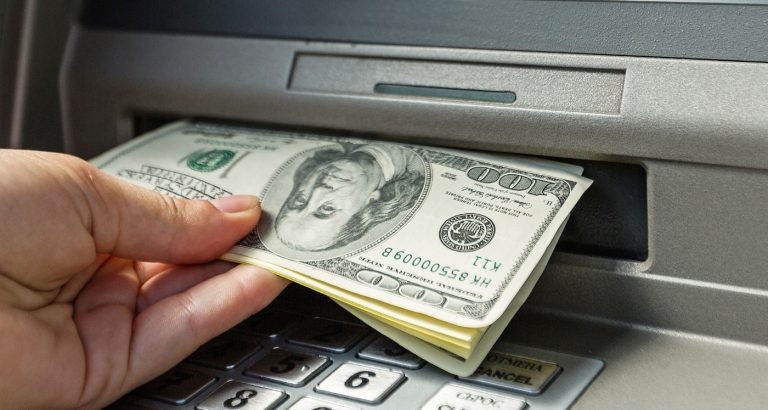How Do Banks Make Money?

Ever wonder how banks manage to have the nicest buildings, endless ads, and those fancy pens they never let you keep? Spoiler alert: It is not because they are feeling generous. Banks are in the business of making serious money, and they do it in ways most people do not even think about.
But exactly how do banks make money? This article sheds some light on the banking system and how banks can make money. From interest rates to fees you did not even realize you were paying, they have a whole system designed to keep the cash flowing in their favor. If you have ever questioned where all that money goes when you deposit your paycheck, this breakdown will open your eyes. The better you understand how banks make money, the smarter you can be with your own. Ready to find out what is really going on behind the scenes?
As an affiliate partner of various brands and sponsored content, HerPaperRoute may earn commission on qualifying purchases. Disclaimer
Anyone who has a bank account most likely uses it rather frequently, but the majority of us might not know exactly how banks work. The basics are known; free checking accounts provide you with interest rates, and some banks offer no-charge ATM services. Similar to most other types of businesses, any bank’s primary goal or topmost priority is to make a profit. A bank doesn’t actually make a profit unless customers bring their monies for deposits.
That is why there is typically a large responsibility on banks to not only attract customers but to retain clients in the various banking institutions. Have you ever noticed that banks offer referral and sign-up gifts, offer high-value clients benefits, and waive fees on direct deposits? Well, now you know why. Like any business, banks have expenses, so they require revenue streams that can be strategically leveraged to grow.
What You Should Consider When Picking a Bank
The simple act of depositing your money into a bank account comes at an opportunity cost. Here’s what this means. Instead of investing the money yourself, you are choosing to loan it to a bank.
The bank uses your money to turn a profit. You get a place to securely save your money and earn a small interest on it in exchange. All of this means that you need to consider several factors when choosing the type of account and bank you want to do business with. Once you take the time to decide, it becomes easier to figure out how much to invest elsewhere and what you should deposit in a bank.
The bank you choose must be FDIC insured. FDIC stands for Federal Deposit Insurance Corporation, and it is a federal corporation that insures accounts in banks and other qualified financial institutions.
FDIC covers deposits up to a maximum of $250,000 in case the deposit bank folds up or closes permanently.
Next, you need to pay attention to any associated fees. One of the ways a bank makes money is by charging fees (more on that later), so the last thing you want to do is choose a bank or account that charges you more fees than you are willing to pay. It doesn’t hurt to ask a bank if there is a way to avoid or waive the fees. Think about this for a minute; if you have an account that charges $8 for account maintenance fee every month for five years, you would have been charged $480.
If you believe that your $480 could have been better invested elsewhere or spent on something more beneficial than paying some fees you don’t even understand, you know what decision you must make. Pay attention to any fees, especially if you aim to open various accounts to manage your income.
How Do Banks Make Money?
While banks are renowned for placing recurring fees or charging penalties to account holders, the principal way they can make money is from loans. Here are the various ways banks make money.
Interchange Fees
You are in the checkout line. The cashier asks you to swipe your card, and you do, swiping your credit or debit card at no additional cost to you.
While you might use a credit or debit card for free, the transaction was not free. It incurred a processing or transaction fee known as interchange.
This fee is generally charged to the merchant’s bank by your bank, with the fee being a percentage of the total cost of your goods. The receiving bank then deducts this charge and its own transaction fee from the overall cost of the transaction.
Here’s an example to help you understand better. Suppose you buy a cup of coffee from your favorite coffee shop. The coffee shop might be required to pay a processing fee to your bank so your credit or debit transaction can be approved. What this means is that both receiving and originating banks make money from the fees your favorite coffee shop has to pay. Given this double charge, it is no surprise to see establishments have a minimum purchase requirement since the fees can quickly add up.
Banking Fees
Banking fees can be classified as noninterest income. Banking fees are grouped into two categories: case-by-case fees and regular fees. These fees might include:
- Your traditional account maintenance fees: Account maintenance fees are typically charged to an account every month simply for being active. Keep in mind that while account maintenance fees are widespread, they can be avoided. Find out whether this is an option when opening a particular type of account or using a particular bank.
- Inactivity fees: Inactivity fees are levied on accounts that aren’t used very frequently, particularly on inactive checking accounts. It is always a smart move to research the type of account you intend to get before opening it.
- Insufficient fund charges or overdraft fees: An overdraft fee is charged to accounts that spend more than the amount in their account. For example, if you have $500 and you make a purchase of $1000, you will be charged an overdraft fee on the $500 that isn’t in your account.
- Wire transfer fees: Wire transfer fees are charged if you opt for a faster means to send funds from one bank account to another. Unlike ACH transfers that usually take a couple of days to complete, wire transfers are typically same-day delivery.
- Excessive withdrawal fees: These fees are charged to savings accounts that have excessive withdrawals on them. This is a federal government-mandated fee, as there are laws limiting the number of times you can withdraw from a savings account in a month.
- Paper statement charges: These charges are incurred by those who want to go the traditional route with their bank statement. To avoid these charges, simply go paperless. It is also an effective way to keep track of your finances and also be environmentally conscious.
- Debit card or credit card fees: These fees are usually charged when a new credit card or debit card is issued. They can also be charged for stolen or lost cards.
- ATM fees: An ATM fee is a fee charged for using particular ATMs outside your bank’s network.
- Minimum balance charge: This fee is incurred when the amount in your account is lower than the minimum balance required.
- Bad check penalties: This fee is incurred if you deposit a bad check given to you by someone else. It is charged regardless of whether or not you are aware that it is a dud check.
Profits from Debt Interest
When you deposit money into a bank account, the commercial bank offers the money as loans to businesses and individuals in return for interest. You get paid a certain amount of interest (usually a very low amount) for simply keeping your money with the bank.
However, the interest income banks get is more than what they pay to account holders. It is this difference in the interest rate that turns them a profit. For instance, your checking account earns you 1% every month. The bank uses the deposits to issue credit cards at 20%, student loans at 12%, and mortgages at 4%. As a result, it makes a profit of 19%, 11%, and 3% respectively on each loan facility.
When you factor in the interest homeowners pay on their mortgage or the interest on loans given out, banks can make quite a lot of money on what seems like a small percentage margin.
Bigger banks, particularly investment banks, can earn over $50 billion annually on interest alone! This doesn’t take into account the income earned from other products and services. By simply offering you pennies every month, the financial institution can earn millions.
What Expenses Do Banks Have?
To fully understand the ways that banks make money, let’s look at the expenses they have.
Noninterest Expenses
Approximately 15% of the cost incurred in operating a bank is classified as a noninterest expense. This amounts to about $400,000 on average for most bank branches operating around the nation. Noninterest expenses include traditional operating costs, such as employee benefits and salaries, IT, equipment, taxes, rent, and marketing services.
Interest Expenses
Interest expenses can be classified as the cost of the interest on loans taken out by the bank. It might surprise you that banks also take loans.
However, interest expense is not the same as the loans consumers take.
In order to provide loans such as mortgages or credit cards to consumers, banks must loan money from the deposits placed by their customers. When they do this, they are required to pay interest on these deposits.
What Types of Banks Are There?
There are various types of banks, all providing various niche services to certain aspects of the economy.
Traditional Banks
Traditional banks can be broken down into two categories: local banks and big banks.
- Big banks: Big banks are national traditional banks with numerous ATM locations and branches. They have brand recognition and provide multiple partnerships that offer various perks to account holders. One advantage of big banks is that they might have a customer service platform with extended hours. But due to the volume of clients they handle every day, you might end up being just another number. Additionally, larger banks tend to dole out more account fees.
- Local banks: Local banks are community-centric banks that help to stimulate the economy. These banks are more likely to provide a more personal touch to their customer service, including perks like a free checking account. One downside of using a local bank is that they might have limited services compared to larger banks, and their range is usually limited.
Credit Unions
Just as with the local banks, credit unions are community-centric in their operations. One reason for this is because they operate in a nonprofit status and are typically owned by their customers.
When a customer opens a bank account in a credit union, they become a partial owner. One of the benefits of credit unions is that they are more likely to offer loans to customers. However, due to their size, their services are very much limited.
Private Banks
Going by their name, private banks provide exclusive services to wealthy individuals, typically with over $1 million in assets. These banks help their clients by providing tax advice, managing their wealth, and creating a trust to circumvent taxes, particularly inheritance levies.
Commercial Banks
A commercial bank concentrates on having businesses as customers. Businesses require checking accounts just as individuals do.
But the services they need are quite complex, and the number of transactions and required dollar value are a lot more substantial compared to an individual’s checking or savings account.
Commercial banks or corporate banks, as they are also known, are responsible for providing credit lines to businesses, managing payments for their customers, and offering foreign exchange services to businesses that operate overseas.
Online Banks
Online banks operate in a completely different way from traditional banks. But, as their name suggests, these banks are wholly available online, which can be a benefit or a drawback depending on how you relate to technology.
Typically, online banking is free, and customers might get much higher interest rates on accounts compared to a traditional bank. An online bank is great for those that do not deal with cash or checks often.
Investment Banks
The role of investment banks is to help businesses to raise capital from the financial markets. For instance, if a company wants to sell a bond to investors or become a publicly traded company, it typically enlists the services of an investment bank.
An investment bank may also provide advice to corporations on acquisitions and mergers.
Related Articles:

Follow along on Instagram!










